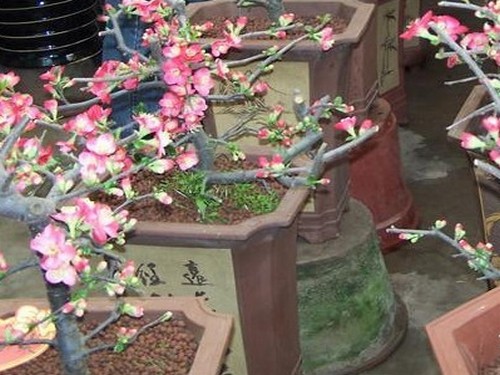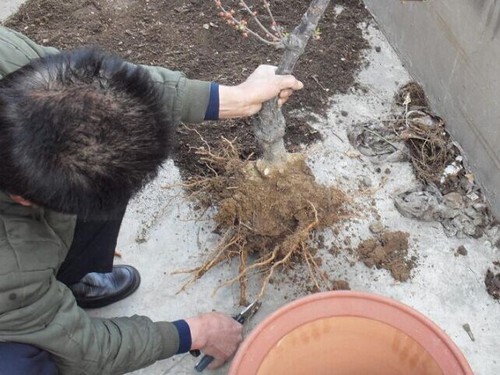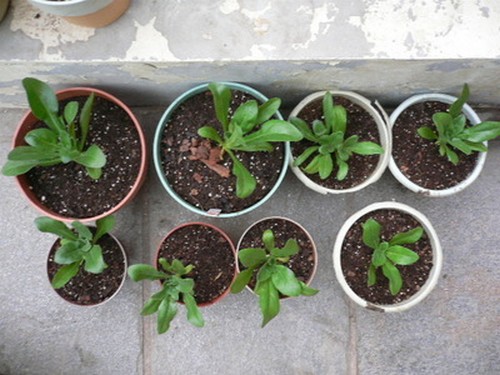Cutting technique of Prunus mume
Prunus mandshurica is an important early spring flowering tree species in gardens in North China. Although it is strong in nature and easy to cultivate, its management in spring can not be relaxed. If we do not pay attention to the management in spring, it will result in neither luxuriant trees nor numerous flowers, which will affect the ornamental effect. Prunus mandshurica has been cultivated in China for hundreds of years and has been planted in most parks all over the country.

The elm leaf plum is also called Xiao Taohong, which gets its name because its leaves are like elm leaves and the flowers look like plum blossoms. Shrubs sparse trees, 2-3 m tall; branches spreading, with numerous short branchlets; branchlets gray, annual branches grayish brown, glabrous or puberulent when young; winter buds short, 2-3 mm long. Branches purple-brown, leaves broadly elliptic to Obovate, apex 3-lobed, margin coarsely serrate; flowers single to double, purplish red, 2 born in leaf axils, florescence April; drupe red, subglobose, hairy.
As an important early spring flowering tree species in gardens in North China, although it is strong in nature and easy to cultivate, its management in spring can not be relaxed. If we do not pay attention to the management of spring, the trees will not grow luxuriantly and blossom, and the ornamental effect will be affected. The ornamental effect is often to use the same year's branches for tender wood cutting in late spring and early autumn, or to use last year's branches for old branch cutting in early spring.
Cutting substrate: is used for cutting nutrient soil or river sand, peat soil and other materials. Due to the limited conditions, it is difficult to get the ideal cutting substrate, so it is recommended to use the prepared and sterilized cutting substrate; medium and coarse river sand is also fine, but rinse with clean water several times before use. Do not use sea sand and river sand in saline-alkali areas, they are not suitable for the growth of flowers and plants.
Selection of cutting branches: when the tender wood cuttings were carried out, the sturdy branches of the current year were selected as cuttings when the plants were growing vigorously from the end of spring to early autumn. After cutting off the branches, select the sturdy parts and cut them into segments 5-15 cm long, each with more than 3 leaf nodes. When cutting cuttings, it should be noted that the upper cut is cut flat at about 1 cm above the uppermost leaf node, and the lower cut is about 0.5 cm below the lowest leaf node, and the upper and lower cut should be flat (knife should be sharp). When hardwood cuttings are carried out, after the temperature rises in early spring, last year's robust branches are selected as cuttings. Each cuttage usually retains 3-4 nodes, and the cutting method is the same as that of softwood cuttings.
[management after cutting]
Temperature: the optimum temperature for rooting of cuttings was 20 ℃ ~ 30 ℃, which was lower than 20 ℃, and the rooting of cuttings was difficult and slow. When the temperature was higher than 30 ℃, the upper and lower cuttings were easily infected and rotted by bacteria, and the higher the temperature was, the greater the proportion of rot was. When there is a low temperature after cutting, the heat preservation measure is mainly to wrap the flowerpot or container used for cutting with thin film; when the temperature is too high after cutting, the cooling measure is mainly to shade the cuttings, to cover 50-80% of the sun, and at the same time, spray the cuttings 3-5 times a day, with more times of spraying when the temperature is higher in sunny days, lower temperatures and higher temperatures in rainy days, but less or no spraying times.
Humidity: the relative humidity of the air must be kept at 750.85% after cutting. The basic requirement for cuttings to take root is to ensure that cuttings are fresh and tender and can be used to produce rooting substances before they take root. However, cuttings without rooting can not absorb enough water to maintain their water balance, so it is necessary to reduce the water evaporation of cuttings by spraying: under shaded conditions, the cuttings are sprayed 3-5 times a day. The higher the temperature in sunny days, the more the times of spraying, the lower the temperature in cloudy and rainy days, the less or no spraying. But with excessive spraying, cuttings are easy to be infected by bacteria and rot, because many kinds of bacteria exist in the water.
Light: cutting propagation is inseparable from sunlight, because cuttings continue to carry out photosynthesis to produce nutrients and rooting materials to supply their rooting needs. However, the stronger the light, the higher the temperature in the cuttings, the more exuberant transpiration of cuttings, and the more water consumed, which is not conducive to the survival of cuttings. Therefore, after cutting, the sun must be shaded by 50% to 80%, and then gradually removed after the root system grows: remove the sunscreen at 4:00 every sunny day, and cover it before 9:00 the next day.
Time: 2019-06-11 Click:
- Prev

Propagation technique of Prunus mume
The seeds of Prunus mandshurica generally mature in the middle of August, and can be harvested when the pericarp is orange-yellow or red-yellow, then the harvested fruit is cooled and dried, screened and stored in a sack or in a transparent container and stored in a cool, dry and ventilated place. The propagation of Prunus mandshurica can be done by grafting, sowing, striping and so on.
- Next

Propagation methods of Calendula
Calendula has strong resistance to sulfur dioxide and certain resistance to cyanide and hydrogen sulfide. It is an excellent anti-pollution flower and the main material of spring flower bed. It can be used as cut flowers and potted plants. Suitable for central square, flower bed, flower belt layout, can also be used as lawn edge flowers or pot ornamental
Related
- Fuxing push coffee new agricultural production and marketing class: lack of small-scale processing plants
- Jujube rice field leisure farm deep ploughing Yilan for five years to create a space for organic food and play
- Nongyu Farm-A trial of organic papaya for brave women with advanced technology
- Four points for attention in the prevention and control of diseases and insect pests of edible fungi
- How to add nutrient solution to Edible Fungi
- Is there any good way to control edible fungus mites?
- Open Inoculation Technology of Edible Fungi
- Is there any clever way to use fertilizer for edible fungus in winter?
- What agents are used to kill the pathogens of edible fungi in the mushroom shed?
- Rapid drying of Edible Fungi

